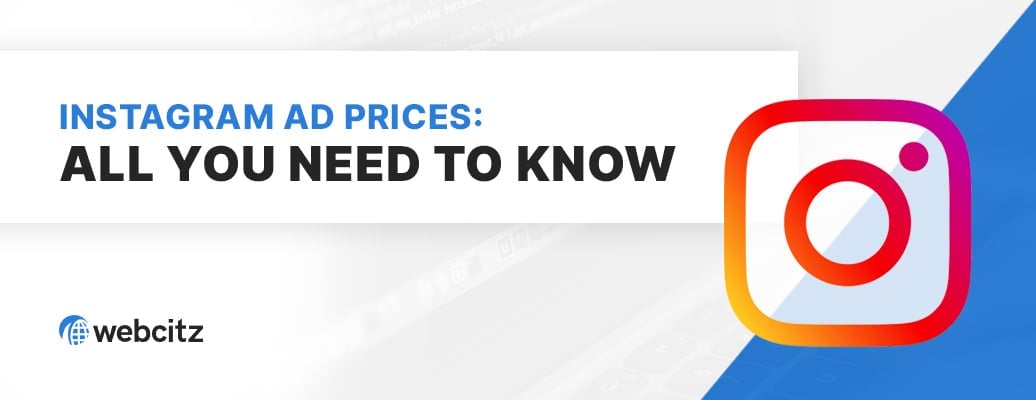Our Facebook Ads Management Services
With over 2.8 billion monthly active users, Facebook has become one of the most powerful advertising platforms.
Hiring a Facebook Ads manager is an excellent investment for your business if you are looking to increase your online presence or get more conversions.
However, managing and optimizing Facebook ads can be a complex and time-consuming task, which is why many businesses choose to hire a Facebook Ads agency.
1.) Create and launch effective advertising campaigns
Your advertising manager can help you create and launch effective advertising campaigns.
Our ads managers have the expertise and knowledge to create ads that are tailored to your business’s specific goals and target audience.
Additionally, our Facebook Ads managers are familiar with the latest features, tools, and best practices for creating high-performing ads.
With our help, your business can create ads that are more likely to engage users, increase click-through rates, and drive more conversions.
2.) Monitor and optimize ad performance
Your dedicated Facebook Ads manager will have access to detailed analytics and data, which they can use to monitor and optimize your ad performance in real-time.
This will allow our ads managers to track the performance of each ad set and ad, and make adjustments as needed to improve the ROI of the Facebook ad campaigns.
This can save your business a great deal of time and money by allowing your ad spend to focus on the most successful ads and strategies.
A Few of Our Facebook Ads Experts





3.) Create detailed targeting strategies
Your Facebook account manager will be able to create a detailed targeting strategy, which will allow your business to reach its ideal audience.
Your ads manager can identify and target users based on factors such as age, location, interests, and behaviors.
This level of targeting can your business to get its message in front of the people who are most likely to buy your products or services. Please know that we tend to use broad targeting though since interest based targeting is slowly losing importance.
Moreover, your Facebook Ads team can help you create and launch retargeting campaigns, which will help to bring users who have previously interacted with your website or ads back into your funnel.
Retargeting can be a powerful way to increase conversions and boost sales, since most audiences need more than one touchpoint before converting.
4.) Scale ad sets and ads effectively
Our Facebook Ads managers can even help with scaling ad campaigns to profitably reach larger audiences.
Facebook Ads Management Pricing
- The starting price is for ad accounts spending less than $1,000/mo. For larger accounts, please reach out for a custom quote.
Google Ads Management Pricing
- The starting price is for ad accounts spending less than $1,000/mo. For larger accounts, please reach out for a custom quote.
How We Measure the Success of Facebook Ads
Measuring the success of Facebook advertising services is crucial to understanding the effectiveness of your advertising campaigns and making data-driven decisions.
Let’s briefly discuss some of the metrics and tools we commonly use in our Facebook ad campaign management.
Metrics we monitor
Here are a few key metrics to focus on when evaluating the success of your Facebook ad services:
- Reach: Reach is the total number of people who have seen your ad. This metric will give you an idea of how many people have been exposed to your ad.
- Impressions: Impressions are the number of times an ad has been viewed. This metric will give you a better understanding of the frequency of ad views.
- Click-Through Rate (CTR): CTR is the number of clicks your ad receives divided by the number of impressions it receives. It measures the effectiveness of your ad in terms of getting people to take action, it is a good way to see how relevant and attractive your ad is.
- Conversion Rate: Conversion rate is the percentage of people who took a desired action on your website or lead form after clicking on your ad, like making a purchase, signing up for a newsletter, visiting your Facebook page, etc. This metric will give you a better understanding of how well your ad is performing in terms of driving conversions.
- Cost per Action (CPA): CPA is the cost of an ad divided by the number of conversions it generated. This metric will give you a better idea of how much it cost you to acquire a new customer or lead, and it will help you to optimize your ad spend.
- Return on Ad Spend (ROAS): ROAS is a ratio of the revenue generated from a campaign to the cost of the campaign. It will help you to understand how much money you made for each dollar spent on ads.
- Engagement: Engagement metrics such as likes, shares, and comments on your ads will give you an idea of how well your ad resonates with your target audience.
Tools we use
There are a number of ad attribution tools available for measuring the success of Facebook Ads. These include:
- Facebook Ads Manager: Facebook’s built-in Ads Manager is a great starting point for understanding the performance of your ads. It provides detailed metrics on reach, impressions, CTR, conversion rate, CPA, and ROAS. Additionally, the tool allows you to analyze and optimize your ad campaigns, and track how the users engaging with your website after clicking on your ad. However, what it lacks is accuracy in terms of ad attribution, especially in a post iOS 14.5 world. This is why so many Facebook Ads managers use third-party tools like Wicked Reports, Triple Whale, or Northbeam.
- Google Analytics: Google Analytics is a free tool for tracking user behavior on your website, which can be used with Facebook Ads for advanced measurement and attribution. You can track user engagement, measure conversions and revenue, and get an alternative picture of how your Facebook Ads are driving users to take action.
- Wicked Reports: Wicked Reports is an attribution and digital marketing analytics platform that helps businesses to understand their customer acquisition and sales metrics. The platform provides data on customer behavior, engagement, and conversion rates, which can help businesses to optimize their social media ads and improve ROI.
- Triple Whale: Triple whale is another ad attribution and social media marketing analytics platform that is hugely popular with direct to consumer brands running a Shopify website.
- Northbeam: Northbeam is another ad attribution and marketing intelligence platform for larger enterprises.

Our 7-Step Facebook Ads Management Process
The basic ad management process we follow for launching and optimizing Facebook campaigns can be broken down into following steps:
1.) Define your goals
Before launching ads, it’s important we have a clear understanding of what you want to achieve with your Facebook advertising campaign.
This could include goals such as increasing brand awareness, driving website traffic, or generating sales.
Defining your goals will help us to create ad campaigns that are specific to your business objectives.
2.) Research your audience
It is also important to research your target audience before creating ads. This will help ensure the right message and offer is used in the ads, which will improve click through rates and engagement.
In some situations, this information comes to light after running test ads.
3.) Create your ad
Once you have defined your goals and audience, we can start creating your ads.
This includes deciding on the ad format (image, video, carousel, etc), choosing the right angle, writing ad copy, and setting a low starting budget.
We suggest testing 2-3 ads per ad set to start any campaign.
4.) Launch your ad
After we’ve created your first set of ads, we can launch it on Facebook! This will allow us to start getting results to see how things are performing.
5.) Monitor and optimize
After your ads have launched, it’s important to monitor the performance of your Facebook marketing and make adjustments accordingly.
This includes analyzing metrics such as reach, impressions, click-through rate, and conversion rate for most ad formats.
For video ads, it is important to review metrics like thumb-stop rate, which is a good indicator for how your videos resonate with the viewers.
6.) Test and Iterate
For Facebook Ads, we should continuously test and iterate different elements of your ads, such as ad copy, images, audience targeting, and ad placement.
Doing so helps us improve the performance of your ads over time, and achieve better results. If you leave the same ads running you’ll suffer from ad decay or ad fatigue, which will result in reduced performance.
7.) Conclusion and reporting
Once your ads have run for a certain period of time (at a minimum, a few weeks), we can evaluate their performance and draw some conclusions.
It’s important to report on the performance of the ads, the results obtained, and the insights gained. These can help everyone involved make data-driven decisions on how to improve future ad campaigns.
Facebook Ads FAQs
What is Facebook Ads management?
Facebook Ads management is the process of creating, optimizing, and monitoring advertising campaigns on Facebook and Instagram. It involves strategic planning, targeting, budget management, and performance analysis to achieve the best results for your business.
What to look for in a Facebook Ads manager?
When looking for a Facebook Ad management service, there are several factors to consider, such as:
- Experience: Look for a Facebook Ads agency or expert who has experience managing ad campaigns for businesses similar to yours. They should be able to demonstrate their ability to create effective campaigns, track results, and optimize ad sets based on data.
- Knowledge of trends and best practices: A good Facebook Ads manager should be knowledgeable about the latest trends and best practices for advertising on Facebook. They should be able to help you stay up-to-date with the latest features and advertising options.
- Strong analytical skills: A good dedicated account manager or team should have strong analytical skills and be able to analyze data, identify patterns, and make recommendations to improve the performance of your campaigns.
- Strategic thinking: An ideal Facebook Ads manager or Facebook Ads agency should be able to think strategically, understand your goals, and develop advertising campaigns that support those business goals.
- Communication skills: A great Facebook Ads agency should be able to clearly communicate with you, and be able to explain the reasoning behind their decisions and recommendations.
- Campaign optimization: Look for a Facebook Ad manager who can optimize campaigns based on data, and can test ads, targeting, and settings to improve their performance.
- Flexibility: Choose someone who can adapt to the changes in the market and the different challenges that your business may face with Facebook Ads.
- Transparent reporting: Make sure to find a Facebook Ad agency that provides transparent and accurate reporting. This will help you get a clear understanding of the performance of your campaigns and make data-driven decisions.
It’s worth noting that a good Facebook Ads management team should have a mix of personnel with creative flare and technical skills to create compelling ads that resonate with your target audience.
This blend can help you to reach your business goals more quickly.
Therefore, don’t hesitate to ask for references, testimonials, and case studies to get a better understanding.
How can my small business benefit from Facebook and Instagram ads?
These platforms have billions of active users, offering a unique opportunity to target specific demographics, interests, and behaviors. A well-managed ad campaign can increase brand awareness, drive traffic, and boost sales.
Are Facebook and Instagram ads suitable for my industry?
Almost all industries can benefit from these platforms due to their vast user base. We can review your business and target audience to determine the most effective ad strategies for your industry. For the most part, only those industries that aren’t acceptable to the Facebook Ads advertising policies will find the platform to not fit their industry.
How do you determine the right audience for my ads?
We leverage Facebook’s powerful targeting options, combining demographic data, interests, behaviors, and lookalike audiences, based on your existing customers, to pinpoint the best audience segments for your campaigns. In some cases, we simply rely on broad targeting and allow the Facebook algorithm to find the best audience for your product or service.
How much should I budget for a Facebook Ads campaign?
The budget depends on your goals, industry, and competition. However, even with a modest budget, effective targeting can yield significant results. We’ll provide a recommendation tailored to your business, but it should be expected to spend at least as much as our management fee on ads.
How will I know if the Facebook Ads campaign is working?
Transparency is key. We provide regular, detailed reports showing metrics like reach, click-through rates, conversions, and ROI. This allows you to measure the success and impact of the campaigns.
What kind of ads will you create for my business?
Facebook and Instagram offer various ad formats, from image and video ads to carousel and story ads. Depending on your objectives and content, we’ll design campaigns that resonate best with your audience. The creation of video ads is much more time consuming, so a separate budget will be required to create those visual assets.
How frequently will my ads be reviewed and optimized?
Continuous optimization is essential for success. We’ll monitor your ads’ performance routinely, making necessary adjustments to bids, creatives, and targeting to ensure optimal results and prevent ad decay.
Why should I choose your agency for Facebook Ads management over others?
Our team specializes in the nuances of Facebook and Instagram advertising. We stay updated with platform changes, use data-driven strategies, and prioritize your business goals, ensuring you get the most out of your ad spend.
Hear what our customers are saying














